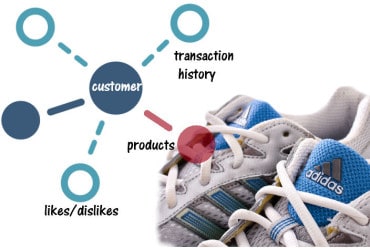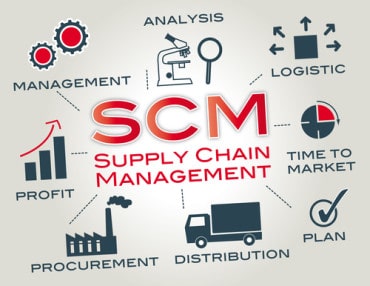
With other sectors seeing blockchain technology as a way to transform how their information is protected, healthcare will be next.
A load of personally identifiable information, a web of institutions guarding that information and a series of regulations that aim to protect that data — healthcare and the financial services industry have a lot in common when it comes to dealing with and protecting the public’s information. So with banks and Wall Street seeing blockchain technology as a way to transform how their information is protected, it’s no surprise that the healthcare industry wants to follow suit.
But what does the technology that serves as the backbone of cryptocurrencies like Bitcoin have to offer outside of financial gain? And is it more than just hype?
See also: Blockchain, AI, and IoT will converge in healthcare
Blockchain technology at its core is a way to ensure that any transaction — be it a payment, contract or any other sort of data exchange — is permanent and secure. These transactions require a private key to be matched with a second key, and the resulting information is stored once a set of rules are met across a distributed network of miners. The data is stored in a so-called block, and each subsequent block relies on all the data in the blocks made prior to it to exist.
Historically healthcare has been a sector slow to adopt cutting-edge technologies. However, the industry is turning over a new leaf in the age of electronic health records (EHRs), robotic surgery and artificial intelligence (AI) driven image recognition. Blockchain offers the healthcare industry a high-tech solution that it desperately needs, considering healthcare breaches comprise 27 percent of cybersecurity incidents. So any technology that promises to secure permanent transactions could make a huge difference when it comes to keeping patient data safe.
This technology is evolving from an incubation phase to an ideation phase. Understanding the applications of blockchain and the potential barriers to adoption can help the healthcare industry get a hype-free look at how this new technology can transform the industry’s digital footprint.
Healthcare’s best blockchain use cases
The implementation of blockchain technology in healthcare will likely focus on some easier-to-implement use cases to start.
Claims Adjudication and Billing Management
Blockchain-based systems can provide realistic solutions for minimizing medical billing-related fraud — a highly relevant use case given the number of fraudulent activities around improper medical billing and reimbursements across the payer institutions. For example, in a situation where a health plan and patient are dealing with a contract, the blockchain could automatically verify and authorize information, as well as the contractual processes — eliminating the back-and-forth between multiple parties. This would increase transparency and efficiency, leading to lower administration costs, faster claims processing and less money lost.
Interoperability and Clinical Health Data Exchange
Blockchain could enable data exchange systems that are cryptographically secured and irrevocable, fostering seamless access to historic and real-time patient data, while eliminating the burden and cost of data reconciliation. Of course, this is much easier said than done, given the nature of the structured and unstructured data from multiple sources in the healthcare industry.
Clinical Trials
Many clinical trials record their data in silos, meaning the information is not easily shareable among the medical community. This isn’t just a data management issue, it’s a safety issue. Blockchain could serve as a permanent ledger to store these trials’ processes and results, so the medical community can have an easier time validating outcomes and collaborating on future research.
Population Health Management
Instead of relying on Health Interoperability Exchange (HIE) systems, organizations can use blockchain technology to eliminate intermediaries and access patient databases on a large scale. Blockchain presents the opportunity to potentially leapfrog population health by providing trust where none exists, including continuous access to patient records and directly linking information to clinical and financial outcomes.
Drug Supply Chain Integrity
Counterfeit prescription drugs are a $75 billion global problem, and approximately 80 percent of these fake products are shipped to the U.S. from overseas. But by creating a digital key when a high-value product like a pharmaceutical is physically created, blockchain can be used to trace the origin of the product until it reaches a consumer. When the physical product moves, the blockchain token changes hands as well, mirroring its real-world chain of custody.
Managing AI-Generated Data
As AI and machine learning proliferate in healthcare, the industry undoubtedly must deal with more data than it ever has before. Not only that, but this data will have to be highly shareable, among the patient, doctors, medical facilities and healthcare providers. This large amount of data contains very sensitive information, and blockchain will allow for both big data discovery and data democratization to occur without posing a security risk.
Cybersecurity
There were more reported healthcare breaches in 2016 than ever seen before — and it’s looking like this year is following suit. In fact, the Ponemon 2016 Cost of Data Breach report found that within the healthcare industry, the average cost per stolen record was $355, which is more than twice the average cost of a stolen record worldwide. As health data digitization continues to evolve, cybersecurity challenges will continue to persist. Blockchain has the potential to change the evolution of cybersecurity in healthcare by bridging the gaps of device data interoperability while ensuring security, privacy, and reliability.
If these uses seem far off, there is a steady stream of industry momentum that says otherwise. In fact, the Centers for Disease Control and Prevention recently started researching how blockchain could be used to create secure, shareable electronic medical records, clinical trials and health data gathered from wearable devices. Industry IT vendor Change Healthcare is commercializing Hyperledger Fabric 1.0, aiming to be one step ahead of the healthcare industry as it seeks more cohesion in managing EHRs and processing claims.
Barriers to adoption
However, like all shiny, new technologies, blockchain has a few barriers the healthcare industry must address as it moves to adopt it. One of the primary barriers to using a new method to store secure data is the fact that companies have already put a lot of money into existing secure data storage solutions. It was not that long ago that healthcare companies were tasked with transforming their data into digital EHRs. Getting smaller organizations like a doctor’s office to overhaul its data management practices a few years after already doing so is not always easy.
Additionally, blockchain storage uses a vast amount of energy. For instance, it currently takes about a city’s worth of power to support Bitcoin; and, while data mining hardware is decreasing in cost, the demand for cryptocurrencies is not, meaning that eventually, the supply might outweigh demand.
Exactly how blockchain technology in healthcare will work isn’t clear, but some say the revolution is coming fast. In fact, 35 percent of healthcare companies plan on adopting blockchain by year’s end. Understanding how this new technology can be leveraged — and what its limitations are — could potentially transform healthcare into one of the most secure data management industries in existence. We at DMI have started working with clients around blockchain and exploring ways of how we can evolve this from ideation to incubation with the ultimate goal of commercialization.





























